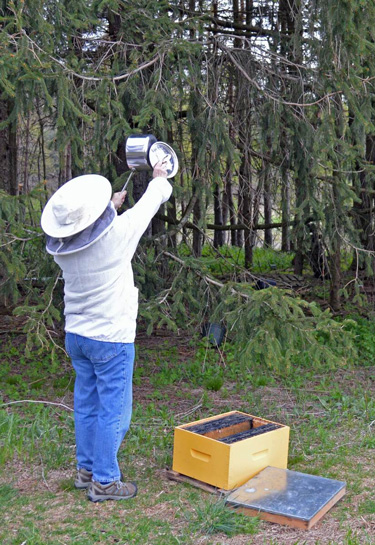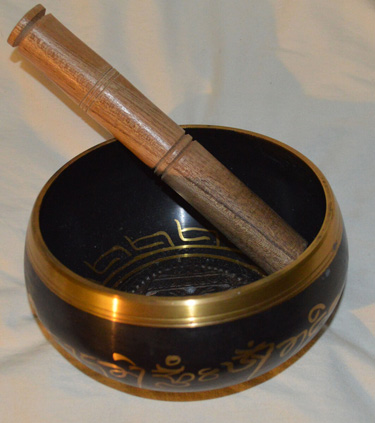
No coverage of swarming would be complete without a reference to tanging. Tanging is an intriguing bit of beekeeping folklore, but does it really work?
The idea is that a beekeeper can entice a swarm down out of a bush or tree and into a hive box just by banging two metal objects together in rhythmic pattern for, well, a while.
Before you laugh yourself silly, you need to know that this is an ancient beekeeping custom, perhaps as old as Medieval times when beekeepers routinely promoted swarming to offset killing half their colonies every year at harvest time. But beekeepers then, as now, had to contend with the unpredictable, bee-driven nature of swarms. Although early beekeepers reportedly slept in their apiaries during swarm season in order to be on hand to capture them all, inevitably some swarms got away.
Common Law established the principle that if you hived a swarm, it became your property, no matter whose hive it had originated from. As a result, if you were pursuing a swarm, and hoping to establish an ongoing claim to it, you needed a way to signal your intention without being able to send out a group text to nearby beekeepers. To do that, the practice was to keep banging two objects together to maintain the claim. Metal objects make a louder noise than wooden ones. Some swarms were undoubtedly recaptured during this pandemonium. And eventually metal-banging began to be conflated with hiving-success due to confirmation bias reinforcing an apparent cause and effect relationship. Or at least, that’s how I imagine a cultural historian might explain this odd practice.
I read about it and filed it in my mind under amusing bee-lore
That was until a few years ago on the day after Labor Day, when I was 12 feet up in my neighbors' cherry tree and still not able to reach a swarm from their only colony. The thing is, that we'd already hived them once, for about 20 minutes. And then, they departed again leaving only a handful of bees behind. I looked through those bees very carefully and concluded the queen (which I had marked only a few months before) was not among them and was likely up in the tree. The bivouac branch was too high for me to reach even after I climbed as high as I dared.
My neighbor's wife didn’t want to give up on her husband's bees while he was away from home. But I was out of ideas and I knew that unless we caught them, the bees' chances of winter survival after such a late-season swarm were nil.
Then I recalled tanging and asked her to get a metal pot and lid and start banging on the pot, making as much noise as she could. Although I'm sure she thought I was a crazy woman, she did what I asked. And she kept up the ruckus for almost half an hour as we shouted back and forth trying to assess if the bees were coming or going between the tree and the hive. Gradually, I was convinced that the clump of bees on the branch was getting smaller and smaller. When I got myself out of the tree, I found that the swarm was actively going into the hive on their own. We hastened to stick in a frame of brood to anchor them once and for all.
Bees don't have the same anatomical capacity to "hear" things that we do, although they can sense vibrations. So maybe it wasn’t the infernal racket of the tanging, just the incessant vibrations which moved them to come down from their perch and slip into a hive, just to get away from it all. I have since met a beekeeper (from California, of course!) who claims that using a Tibetan singing bowl is more effective than metal-on-metal cacophony. Um-m-m-m, maybe…. It would certainly have spared me a bout of tinnitus.
Most swarms are ridiculously easy to capture and hive, if you can get to them. Does tanging work? Is a Tibetan singing bowl even better? I don’t know. All I do know is those bees were up in the tree until my friend started tanging and then, down they went into a hive they'd already rejected once before.
Your mileage may vary, but that’s my story and I’m sticking to it!


